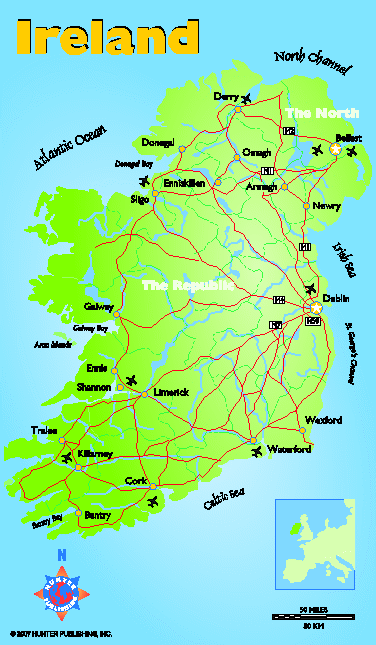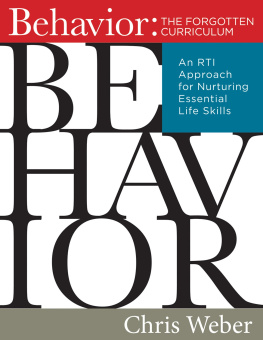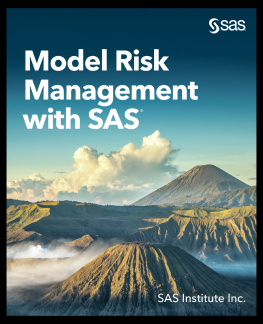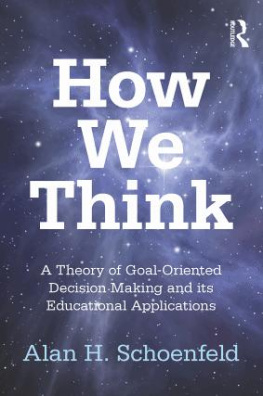Ireland
Tina Neylon
HUNTER PUBLISHING, INC,
Hunter Publishing, Inc.
All rights reserved. No part of this publication may be reproduced, stored in a retrieval system, or transmitted in any form, or by any means, electronic, mechanical, photocopying, recording, or otherwise, without the written permission of the publisher.
This guide focuses on recreational activities. As all such activities contain elements of risk, the publisher, author, affiliated individuals and companies disclaim responsibility for any injury, harm, or illness that may occur to anyone through, or by use of, the information in this book. Every effort was made to insure the accuracy of information in this book, but the publisher and author do not assume, and hereby disclaim, liability for any loss or damage caused by errors, omissions, misleading information or potential travel problems caused by this guide, even if such errors or omissions result from negligence, accident or any other cause.
Maps by Toni Wheeler, Hunter Publishing, Inc.
Recommended Reading
Travellers Trails by Hugh Oram, (Appletree Press, 2001): This attractive little book covers 24 different themed tours, including battle sites, film locations, James Joyce, The Easter Rising, and has lovely photographs. You can dip in and out, gaining information on the area you are in, if you dont want to follow a tour.
Footloose in the West of Ireland by Mike Harding, (Michael Joseph, 1996): Walks in the western counties of the Republic, with sketch maps and suggested routes (youll need detailed maps to actually walk). What makes this book so worthwhile is that its much more - it covers the music, history and folklore of the areas, and is written with love and humour by a man who grew up in England in a family of Irish descent.
The Dingle Peninsula by Steve MacDonagh, (Brandon, 2000): Illustrated with marvellous color photograublishing companyphs, this is the best book about this beautiful area of Co. Kerry. It includes detailed maps of the Dingle Way long-distance walking route. The author has lived in the area for more than 25 years, running a pub. Among his authors is Gerry Adams of the IRA.
Literary Tour of Ireland by Elizabeth Healy (Wolfhound Press, 2001): Even if you arent interested in writers, you will find this book valuable, as it is packed with information about all of the islands 32 counties. It is lavishly illustrated with color and black and white photographs and sketch maps.
The Visitors Guide to Northern Ireland by Rosemary Evans, (Blackstaff Press, 1998): Regularly updated, this is a useful guide, very readable and it has lots of photographs and some maps.
For Historical Background
Atlas of Irish History, General editor Dr Sen Duffy, (Gill & Macmillan, 2000): An enjoyable way of learning about Irish history, using maps as well as many other illustrations.
Oliver Cromwell: An Illustrated History by Helen Litton (Wolfhound Press, 2000): One of a series on historical figures, an excellent overview of the period and the impact of the man on the country. It has lots of illustrations in both color and black and white.
The Easter Rising: A Guide to Dublin in 1916 by Conor Kostick and Lorcan Collins, (OBrien Press, 2000): This little book takes you through the streets during the six days that changed Ireland forever, with lots of historic photographs to help bring that time to life.
A Walk through Rebel Dublin 1916 by Mick OFarrell (Mercier Press, 1999): This covers the same events in a different way, by focusing on locations such as St Stephens Green, Dublin Castle, and so on, and is again illustrated with maps and contemporary photographs.
Introduction

Ireland has a lot to offer - unforgettable scenery, friendly people, and opportunities to enjoy a huge range of sports, entertainment of all kinds, and historic sites to explore. About 100 million people around the world claim some Irish ancestry, so many visitors come here to discover their roots.
Although Ireland is small, there is much to make a stay here truly unforgettable. Ireland has a surprisingly varied landscape. Outside our cities are areas where there is little traffic, and the only sounds are birdsong or waves crashing against the shore.
One of Irelands greatest assets is its people, who are generally friendly and talkative. Many are creative, and our writers, dramatists, composers, musicians, artists, filmmakers, craftspeople and fashion designers have an international reputation that is staggering, considering the size of the country.
The island is made up of the Republic of Ireland and Northern Ireland, the latter being part of the UK (the United Kingdom of Great Britain and Northern Ireland). Northern Ireland is also called Ulster, the Six Counties, or just the North. To avoid confusion, I use the Republic and the North to distinguish between the two parts of the island. Where material refers to the entire island, it is called Ireland. Those of us who live in the Republic call our country Ireland, and not ire - its name in Irish and used on our postage stamps.
The People & Their Culture
Population

The population of the Republic is 3.9 million (Census 2002) and of Northern Ireland 1.6 million (Census 2001). In the Republic, majority live in urban centers, and the western seaboard is sparsely populated. About 40% of the entire population of the Republic lives within 60 miles (97 km) of Dublin; and only 9% live in its northwest region, made up of counties Cavan, Donegal, Leitrim, Monaghan and Sligo.
Northern Ireland is the second most sparsely populated part of the UK, after Scotland, with 317 people per square mile (122 per square km), and with a predominantly young population - 25% under 16 and 37% under 25.
Religion
The Republics constitution guarantees freedom of conscience and the free profession and practice of religion to all citizens. According to a recent census, the populations religions were: Roman Catholic, 91%; Church of Ireland (Anglican), 2.5%; Presbyterian, 0.4%; Methodist, 0.1%; Jewish, less than 0.1%; and about 3% belonging to other religious groupings or with no specific beliefs. While the majority still marries in church and have their children christened, few attend church regularly, especially in urban centers.
The Norths Two Communities
Protestants outnumber Catholics, although that is gradually changing. In the 2001 census 40.3% stated their religion as Catholic, an increase of 3% in 10 years. Catholics are in the majority in some parts of Ulster - Derry City, County Fermanagh,County Armagh and parts of Belfast. In the most recent census 20.7% were recorded as Presbyterian, 15.3% as Church of Ireland and 3.5% as Methodist, and a further 6.1% belonged to other Protestant, Christian or Christian-related denominations.
Social Change
There have been huge changes in attitude towards sexuality over the last 20 years or so, although conservative groups continue to be a force. Note that divorce became legal in the Republic only in the 90s. Despite some criticism, theres an acceptance of couples living together out of wedlock and of children born to single mothers.
Attitudes towards homosexuality have been slower to change, some of this caused by ignorance and a confusion about pedophilia within the Catholic Church exposed in the 1990s, so unfortunately sometimes gays are seen as dangerous to children. Cities have gay pubs and clubs, publications, help lines and a general acceptance, but in quieter areas of the Republic there is still prejudice. Gay visitors should not worry, as tourists are accepted and not expected to have the same mores as residents. Whatever your sexuality, be sensible about how you behave in public, especially rural areas.
Next page









